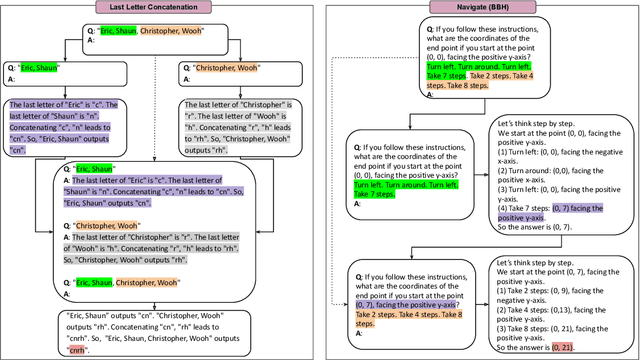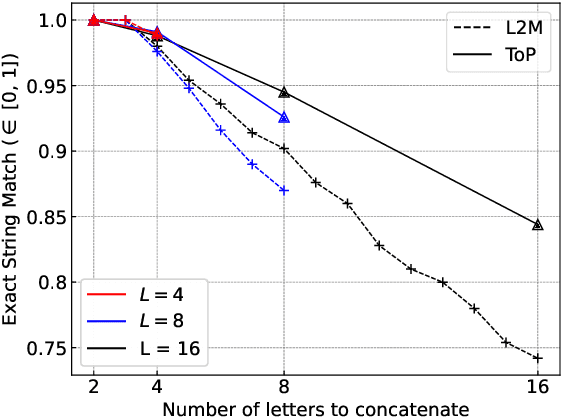Benoît Sagot
ALMAnaCH
ModernBERT or DeBERTaV3? Examining Architecture and Data Influence on Transformer Encoder Models Performance
Apr 11, 2025Abstract:Pretrained transformer-encoder models like DeBERTaV3 and ModernBERT introduce architectural advancements aimed at improving efficiency and performance. Although the authors of ModernBERT report improved performance over DeBERTaV3 on several benchmarks, the lack of disclosed training data and the absence of comparisons using a shared dataset make it difficult to determine whether these gains are due to architectural improvements or differences in training data. In this work, we conduct a controlled study by pretraining ModernBERT on the same dataset as CamemBERTaV2, a DeBERTaV3 French model, isolating the effect of model design. Our results show that the previous model generation remains superior in sample efficiency and overall benchmark performance, with ModernBERT's primary advantage being faster training and inference speed. However, the new proposed model still provides meaningful architectural improvements compared to earlier models such as BERT and RoBERTa. Additionally, we observe that high-quality pre-training data accelerates convergence but does not significantly improve final performance, suggesting potential benchmark saturation. These findings show the importance of disentangling pretraining data from architectural innovations when evaluating transformer models.
Explicit Learning and the LLM in Machine Translation
Mar 12, 2025Abstract:This study explores the capacity of large language models (LLMs) for explicit learning, a process involving the assimilation of metalinguistic explanations to carry out language tasks. Using constructed languages generated by cryptographic means as controlled test environments, we designed experiments to assess an LLM's ability to explicitly learn and apply grammar rules. Our results demonstrate that while LLMs possess a measurable capacity for explicit learning, this ability diminishes as the complexity of the linguistic phenomena at hand increases. Supervised fine-tuning on chains of thought significantly enhances LLM performance but struggles to generalize to typologically novel or more complex linguistic features. These findings point to the need for more diverse training sets and alternative fine-tuning strategies to further improve explicit learning by LLMs.
KréyoLID From Language Identification Towards Language Mining
Mar 09, 2025Abstract:Automatic language identification is frequently framed as a multi-class classification problem. However, when creating digital corpora for less commonly written languages, it may be more appropriate to consider it a data mining problem. For these varieties, one knows ahead of time that the vast majority of documents are of little interest. By minimizing resources spent on classifying such documents, we can create corpora much faster and with better coverage than using established pipelines. To demonstrate the effectiveness of the language mining perspective, we introduce a new pipeline and corpora for several French-based Creoles.
Compositional Translation: A Novel LLM-based Approach for Low-resource Machine Translation
Mar 06, 2025Abstract:The ability of generative large language models (LLMs) to perform in-context learning has given rise to a large body of research into how best to prompt models for various natural language processing tasks. Machine Translation (MT) has been shown to benefit from in-context examples, in particular when they are semantically similar to the sentence to translate. In this paper, we propose a new LLM-based translation paradigm, compositional translation, to replace naive few-shot MT with similarity-based demonstrations. An LLM is used to decompose a sentence into simpler phrases, and then to translate each phrase with the help of retrieved demonstrations. Finally, the LLM is prompted to translate the initial sentence with the help of the self-generated phrase-translation pairs. Our intuition is that this approach should improve translation because these shorter phrases should be intrinsically easier to translate and easier to match with relevant examples. This is especially beneficial in low-resource scenarios, and more generally whenever the selection pool is small or out of domain. We show that compositional translation boosts LLM translation performance on a wide range of popular MT benchmarks, including FLORES 200, NTREX 128 and TICO-19. Code and outputs are available at https://github.com/ArmelRandy/compositional-translation
Q-Filters: Leveraging QK Geometry for Efficient KV Cache Compression
Mar 04, 2025Abstract:Autoregressive language models rely on a Key-Value (KV) Cache, which avoids re-computing past hidden states during generation, making it faster. As model sizes and context lengths grow, the KV Cache becomes a significant memory bottleneck, which calls for compression methods that limit its size during generation. In this paper, we discover surprising properties of Query (Q) and Key (K) vectors that allow us to efficiently approximate attention scores without computing the attention maps. We propose Q-Filters, a training-free KV Cache compression method that filters out less crucial Key-Value pairs based on a single context-agnostic projection. Contrarily to many alternatives, Q-Filters is compatible with FlashAttention, as it does not require direct access to attention weights. Experimental results in long-context settings demonstrate that Q-Filters is competitive with attention-based compression methods such as SnapKV in retrieval tasks while consistently outperforming efficient compression schemes such as Streaming-LLM in generation setups. Notably, Q-Filters achieves a 99% accuracy in the needle-in-a-haystack task with a x32 compression level while reducing the generation perplexity drop by up to 65% in text generation compared to Streaming-LLM.
Diachronic Document Dataset for Semantic Layout Analysis
Nov 15, 2024



Abstract:We present a novel, open-access dataset designed for semantic layout analysis, built to support document recreation workflows through mapping with the Text Encoding Initiative (TEI) standard. This dataset includes 7,254 annotated pages spanning a large temporal range (1600-2024) of digitised and born-digital materials across diverse document types (magazines, papers from sciences and humanities, PhD theses, monographs, plays, administrative reports, etc.) sorted into modular subsets. By incorporating content from different periods and genres, it addresses varying layout complexities and historical changes in document structure. The modular design allows domain-specific configurations. We evaluate object detection models on this dataset, examining the impact of input size and subset-based training. Results show that a 1280-pixel input size for YOLO is optimal and that training on subsets generally benefits from incorporating them into a generic model rather than fine-tuning pre-trained weights.
CamemBERT 2.0: A Smarter French Language Model Aged to Perfection
Nov 13, 2024Abstract:French language models, such as CamemBERT, have been widely adopted across industries for natural language processing (NLP) tasks, with models like CamemBERT seeing over 4 million downloads per month. However, these models face challenges due to temporal concept drift, where outdated training data leads to a decline in performance, especially when encountering new topics and terminology. This issue emphasizes the need for updated models that reflect current linguistic trends. In this paper, we introduce two new versions of the CamemBERT base model-CamemBERTav2 and CamemBERTv2-designed to address these challenges. CamemBERTav2 is based on the DeBERTaV3 architecture and makes use of the Replaced Token Detection (RTD) objective for better contextual understanding, while CamemBERTv2 is built on RoBERTa, which uses the Masked Language Modeling (MLM) objective. Both models are trained on a significantly larger and more recent dataset with longer context length and an updated tokenizer that enhances tokenization performance for French. We evaluate the performance of these models on both general-domain NLP tasks and domain-specific applications, such as medical field tasks, demonstrating their versatility and effectiveness across a range of use cases. Our results show that these updated models vastly outperform their predecessors, making them valuable tools for modern NLP systems. All our new models, as well as intermediate checkpoints, are made openly available on Huggingface.
Tree of Problems: Improving structured problem solving with compositionality
Oct 09, 2024



Abstract:Large Language Models (LLMs) have demonstrated remarkable performance across multiple tasks through in-context learning. For complex reasoning tasks that require step-by-step thinking, Chain-of-Thought (CoT) prompting has given impressive results, especially when combined with self-consistency. Nonetheless, some tasks remain particularly difficult for LLMs to solve. Tree of Thoughts (ToT) and Graph of Thoughts (GoT) emerged as alternatives, dividing the complex problem into paths of subproblems. In this paper, we propose Tree of Problems (ToP), a simpler version of ToT, which we hypothesise can work better for complex tasks that can be divided into identical subtasks. Our empirical results show that our approach outperforms ToT and GoT, and in addition performs better than CoT on complex reasoning tasks. All code for this paper is publicly available here: https://github.com/ArmelRandy/tree-of-problems.
Molyé: A Corpus-based Approach to Language Contact in Colonial France
Aug 08, 2024



Abstract:Whether or not several Creole languages which developed during the early modern period can be considered genetic descendants of European languages has been the subject of intense debate. This is in large part due to the absence of evidence of intermediate forms. This work introduces a new open corpus, the Moly\'e corpus, which combines stereotypical representations of three kinds of language variation in Europe with early attestations of French-based Creole languages across a period of 400 years. It is intended to facilitate future research on the continuity between contact situations in Europe and Creolophone (former) colonies.
In-Context Example Selection via Similarity Search Improves Low-Resource Machine Translation
Aug 01, 2024Abstract:The ability of generative large language models (LLMs) to perform in-context learning has given rise to a large body of research into how best to prompt models for various natural language processing tasks. In this paper, we focus on machine translation (MT), a task that has been shown to benefit from in-context translation examples. However no systematic studies have been published on how best to select examples, and mixed results have been reported on the usefulness of similarity-based selection over random selection. We provide a study covering multiple LLMs and multiple in-context example retrieval strategies, comparing multilingual sentence embeddings. We cover several language directions, representing different levels of language resourcedness (English into French, German, Swahili and Wolof). Contrarily to previously published results, we find that sentence embedding similarity can improve MT, especially for low-resource language directions, and discuss the balance between selection pool diversity and quality. We also highlight potential problems with the evaluation of LLM-based MT and suggest a more appropriate evaluation protocol, adapting the COMET metric to the evaluation of LLMs. Code and outputs are freely available at https://github.com/ArmelRandy/ICL-MT.
 Add to Chrome
Add to Chrome Add to Firefox
Add to Firefox Add to Edge
Add to Edge